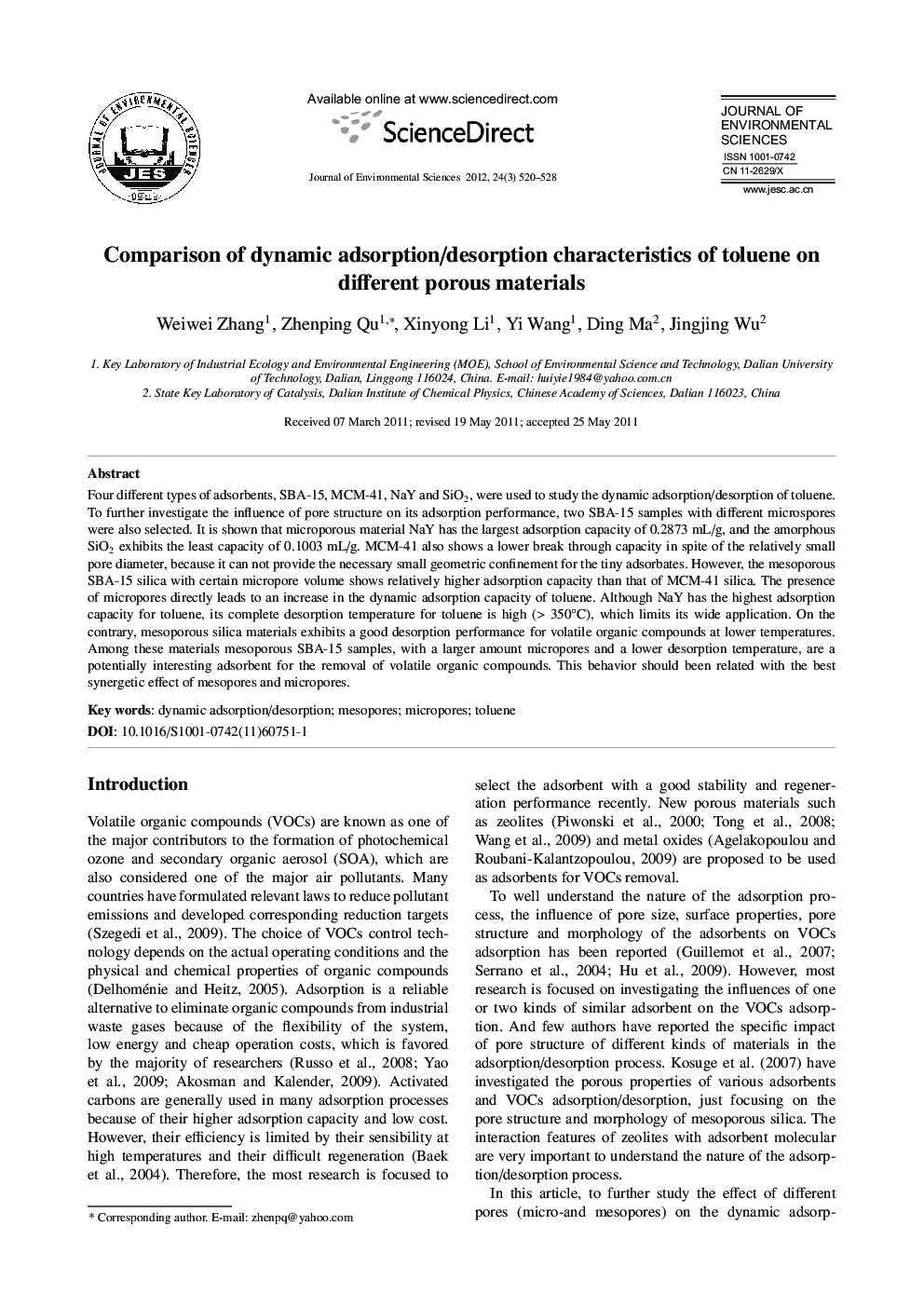| Article ID | Journal | Published Year | Pages | File Type |
|---|---|---|---|---|
| 4455299 | Journal of Environmental Sciences | 2012 | 9 Pages |
Four different types of adsorbents, SBA-15, MCM-41, NaY and SiO2, were used to study the dynamic adsorption/desorption of toluene. To further investigate the influence of pore structure on its adsorption performance, two SBA-15 samples with different microspores were also selected. It is shown that microporous material NaY has the largest adsorption capacity of 0.2873 mL/g, and the amorphous SiO2 exhibits the least capacity of 0.1003 mL/g. MCM-41 also shows a lower break through capacity in spite of the relatively small pore diameter, because it can not provide the necessary small geometric confinement for the tiny adsorbates. However, the mesoporous SBA-15 silica with certain micropore volume shows relatively higher adsorption capacity than that of MCM-41 silica. The presence of micropores directly leads to an increase in the dynamic adsorption capacity of toluene. Although NaY has the highest adsorption capacity for toluene, its complete desorption temperature for toluene is high (< 350°C), which limits its wide application. On the contrary, mesoporous silica materials exhibits a good desorption performance for volatile organic compounds at lower temperatures. Among these materials mesoporous SBA-15 samples, with a larger amount micropores and a lower desorption temperature, are a potentially interesting adsorbent for the removal of volatile organic compounds. This behavior should been related with the best synergetic effect of mesopores and micropores.
